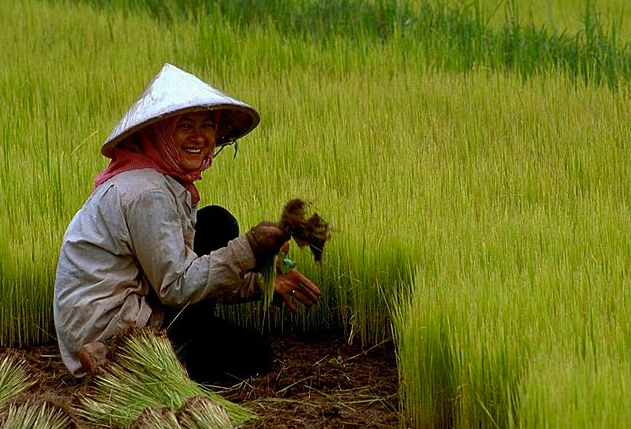Here’s a frightening fact. Via Bloomberg’s Chisaki Watanabe
Japan has no centralized system to check for radiation contamination of food, leaving local authorities and farmers conducting voluntary tests.
Products such as spinach, tea, milk, and fish have been found contaminated with cesium and iodine as far as 360 kilometers (224 miles) from the plant.
Adding to the concern, officials confirmed today rice from Hokota City, about 150 kilometers from Dai-Ichi, was found to contain low levels or cesium. It was the first confirmation of rice contamination since the March 11 accident. [Emphasis mine]
Watanabe also reports that 45% of children living in three towns near the site of the Fukushima nuclear accident are experiencing low-level thyroid radiation exposure. This is particularly worrisome because after the Chernobyl accident, cases of thyroid cancer increased among people exposed to radiation as children or teens.
But, back to the rice: Here’s an item from earlier this month, also from Bloomberg:
Rice Threat
Authorities will ban shipments from areas where they find rice containing cesium exceeding 500 becquerels a kilogram, the government’s legal limit for grains. Any contaminated produce will be destroyed.
“Rice may be the next product where contamination will be discovered as it’s being grown in tainted soil and water,” Yoko Tomiyama, chairwoman of the Consumers Union of Japan, said in an interview. “Higher radiation levels have been detected in prefectures beyond Fukushima.”
Authorities in Chiba on Aug. 9 said that the first five of 49 preliminary tests, including Okki’s farm, didn’t detect radiation in rice, according to the prefecture’s website. Rice from 277 areas in the prefecture will be tested after harvest, the website said.
It would seem that the government — or some sort of credible outside agency like the IAEA — ought to provide that centralized mechanism for reporting on radiation levels in food. If there is nothing to fear, then presumably such a mechanism would put people at ease.
